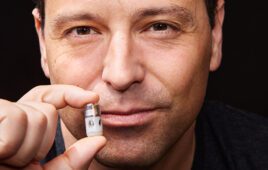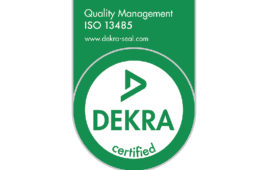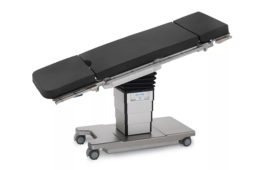Titanium’s properties make it cost-effective for manufacturing springs for medical devices.
Cricket Rumsey, Newcomb Spring

Titanium micro compression springs and extension springs for medical applications (Image from Newcomb Spring)
In surgical components, implantables and other medical devices, springs play a variety of critical roles. Selecting the right spring material can often yield notable improvements in performance, lifespan and cost.
In many medical applications, titanium alloy springs provide critical benefits compared to stainless steels or other materials. A careful cost-benefit analysis can help to ensure the best material is selected.
Corrosion resistance and material stability
Titanium provides remarkable corrosion resistance. This, along with its non-magnetic properties, makes it ideal for many medical and dental applications. While stainless steel has been the material of choice in the past, more and more parts are being designed to take advantage of this very light, strong, non-magnetic material with its excellent corrosion resistance.
Titanium components are often recognized for their biocompatibility, and typically remain static once implanted. Some think of titanium as a material with the same characteristics of bone.
Reduced spatial requirements
Due to titanium’s lower torsional modulus, a titanium spring will require fewer coils than a steel spring to produce a similar load, even when using the same wire diameter. Similarly, a titanium spring can achieve a spring rate (the amount of force required to deflect a spring) with fewer active coils than a similar stainless steel spring.
This often reduces a spring’s free-height, saving space as well as weight. These spatial benefits can be substantial, especially when designing micro-size assemblies.
Stress limitations must always be taken into consideration. In some cases, it may be necessary to increase the wire size to keep the stress in check.
Space savings can be demonstrated using the following formula, in which:
- n – active coils.
- G – modulus in torsion.
- d – wire size.
- R – rate.
- D – mean diameter.
- n = (G * d ^4) / (8 * R * D ^3).
- Modulus in torsion for 302 stainless steel: 10 x 10^6 (design reference only).
- Modulus in torsion for titanium: 5.6 x 10^6 (design reference only).
In this calculation, a titanium spring would require half of the active coils compared to a stainless steel spring with the same dimensional values.
Lightweight
Reducing the weight of surgical tools, equipment and implantables has become increasingly important. Titanium instruments are much lighter than similar stainless steel instruments and retain their strength even after being subjected to cyclic loading. Titanium is recognized as having one of the highest metal strength-to-weight ratios.
Process-tolerant
Medical parts are often exposed to a variety of environmental changes as they move through forming, assembly, cleaning and shipping. A component may undergo several cleaning and inspection processes before packaging. When put into use, these same parts can be exposed to harsh sanitizing agents as well as bodily fluids. Titanium’s stability from initial forming to final implantation can be critical in a spring’s performance. The complete process — from material specification to packaging design — should be detailed in advance.
Cost considerations
Often, the biggest concern when specifying titanium is cost. While material prices depend on a metal’s purity, titanium typically costs five to seven times more than stainless steel. However, given the relatively small size of most medical applications, as well as the performance benefits over the life of the product, the initial cost of titanium is often negated.
Modern CNC machining also holds tight tolerances, reducing errors and waste, and computerized processes have decreased set-up times. Ongoing improvements in forming technology make using higher-cost materials, like titanium, more attractive.
Recent advancements also produce titanium wire more cost-effectively. While many high-volume manufacturing runs still specify other types of material, the transition to titanium is increasingly common.
Spring expertise
To confirm parts will perform as expected, designers should always consult a spring engineer to review material and component specifications. Leading spring manufacturers regularly produce components from titanium, with efficient processes that minimize scrap, minimize part handling and meet strict compliance requirements. Always rely on the expertise of a spring engineer before finalizing material selection.
Cricket Rumsey is general manager of Newcomb Spring’s facility in Dallas, Texas. He brings more than 23 years of spring design and production expertise to his role.
The opinions expressed in this blog post are the author’s only and do not necessarily reflect those of Medical Design and Outsourcing or its employees.



